Summer… The time of the year when temperatures rise and outdoor adventures beckon. The call of the sea for some, the appeal of a sun-drenched coastline, or simply enjoying the good life and relaxing. Whether you’re heading to the beach, preparing your diving gear, hiking a mountain trail, or enjoying city strolls, summer means a more active outdoor lifestyle as well as a more carefree state of mind. But since you’re reading MONOCHROME and not an airline magazine, the focus will be on watches. And more precisely, the topic of finding the right summer watch. But what exactly makes a watch summer-ready? Obviously, the first thing to exclude is anything categorised as a dress watch. But let’s delve deeper into the topic and see what questions you should ask yourself, and what features you should consider in order to find your perfect summer watch (spoiler alert: there will be as many answers as there are readers of this article).


Finding the perfect summer watch – The questions you need to ask yourself?
Before we even start to list what to consider when choosing or buying a summer watch, meaning the watch that will accompany you throughout the holiday season and your outdoor adventures, there are several questions you need to ask yourself. Once you’ll be able to answer those, the choice will be simpler.
- Will I be around water? Will I be swimming with my watch? Will I be diving with my watch?
- Do I intend to use my watch as an instrument for specific sports or activities? Will I be wearing a watch as a tool for adventure? Or will I be spending my holidays at the poolside bar or lounging on a chair, reading a book?
- Will I be travelling to a different time zone? Do I want to keep track of the time at home, to be able connect with friends and family?
- Where will I be travelling? What’s the climate in this region? Will I be in a place where there might be a heatwave?
- Is the place safe? Do I have access to a safe if I want to store my watch?
- Do I feel comfortable wearing bright colours? Or am I more on the conservative side?
- If I’m about to acquire a summer watch, will I be wearing it during the rest of the year?
- As a general rule, what budget can I comfortably spend on a summer watch without feeling guilty afterwards?


The elements to consider and avoid when choosing the right summer watch
What is the perfect summer watch? Well, there’s no simple answer, but actually one answer per person. As a general rule, a summer watch is a functional companion that can keep up with a leisure-oriented lifestyle (this is also true for a weekend-oriented watch), whether you’re heading to the beach, hiking a mountain trail, sailing across the seas, or simply enjoying city strolls. This means that, depending on where you’ll be spending your holidays, different watches match different objectives. But with the questions you’ve now asked yourself and hopefully answered, here are the features and factors you should consider when picking the perfect timepiece for the summer season.
Water-Resistance is non-negotiable
Summer, at least for many of us, means water. Whether you’re heading to the seaside or not, the chances that you will be around water at a certain point are high. There will most likely be a swimming pool around that you’ll enjoy during hotter days, and even if you’re spending your vacations strolling around the city, there will be a pool nearby. Those who regularly hike also know the call of that beautiful, transparent lake, inviting you to jump in. And last but not least, let’s not forget that lovely neighbour at the bar spilling his mojito on you, including your shoes and possibly your watch (I know, it sounds overdone, but I’m talking from experience here).
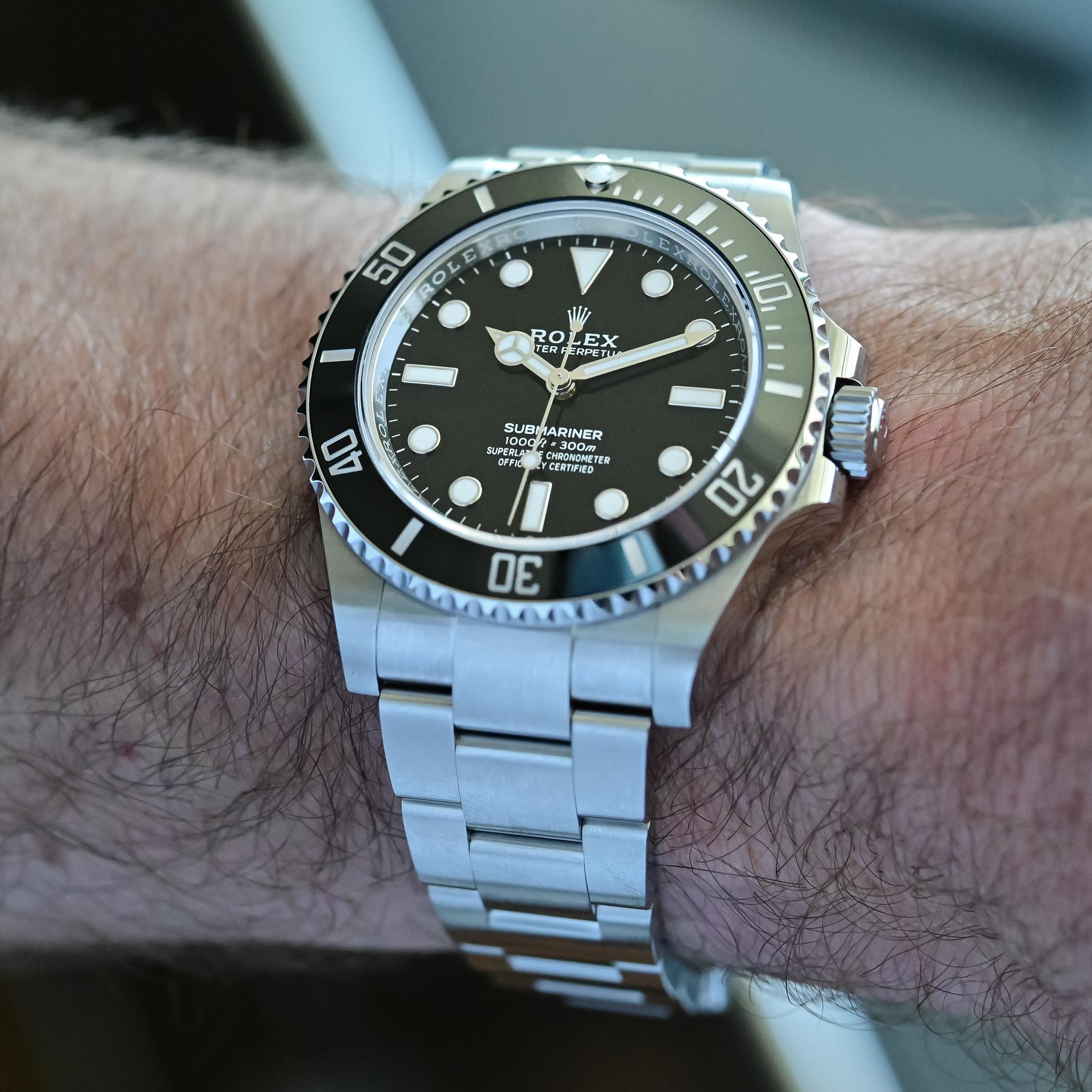
 The Rolex Submariner could be the ultimate summer watch… Solid, water-resistant, versatile… at least if you have the budget for it.
The Rolex Submariner could be the ultimate summer watch… Solid, water-resistant, versatile… at least if you have the budget for it.
All of that to say that whether it’s pool parties, beach vacations, or unexpected thunderstorms, water-resistance is an absolute must for a summer watch. Leave your nice thin time-only dress watch in the safe; it is not relevant during summer weekends. A summer watch should be water-resistant, ideally to at least 100m (10 ATM), to endure pool immersions, humid and warm conditions, and, of course, swimming, sailing, snorkelling, and casual water exposure. The minimum feature to look for is a screw-down crown and a screwed caseback. A push-pull crown, even if the watch claims to be water-resistant to 100m, will potentially put you at risk.
For those planning on more intense aquatic activities, like diving or surfing (yes, water-resistance isn’t only about depth but pressure in general, and falling in water at high speed does generate high pressure on your watch), then consider true dive watches with at least 200m water-resistance. It might seem like overthinking, but always remember the motto, “better safe than sorry”. When it comes to avoiding water from entering your watch, safety is key.
Shock-resistance and overall durability are a must
For the same reasons we’ve exposed above, summer means sports activities, aquatic or not. Some will spend their summer weekends and holidays hiking, rafting, camping, mountain biking, rock climbing, or simply gardening. And then there are classic sports, such as golf, tennis, and beach volleyball… activities that generate situations of physical stress and are the playground of potential shocks. While I’d certainly encourage you to remove your watch for some of the aforementioned activities – unless you own a Richard Mille Nadal, playing tennis with a watch isn’t really advisable – most of these activities can be enjoyed with a timepiece on the wrist. In some instances, a watch would even be recommended. But keep in mind that shocks can damage the movement.
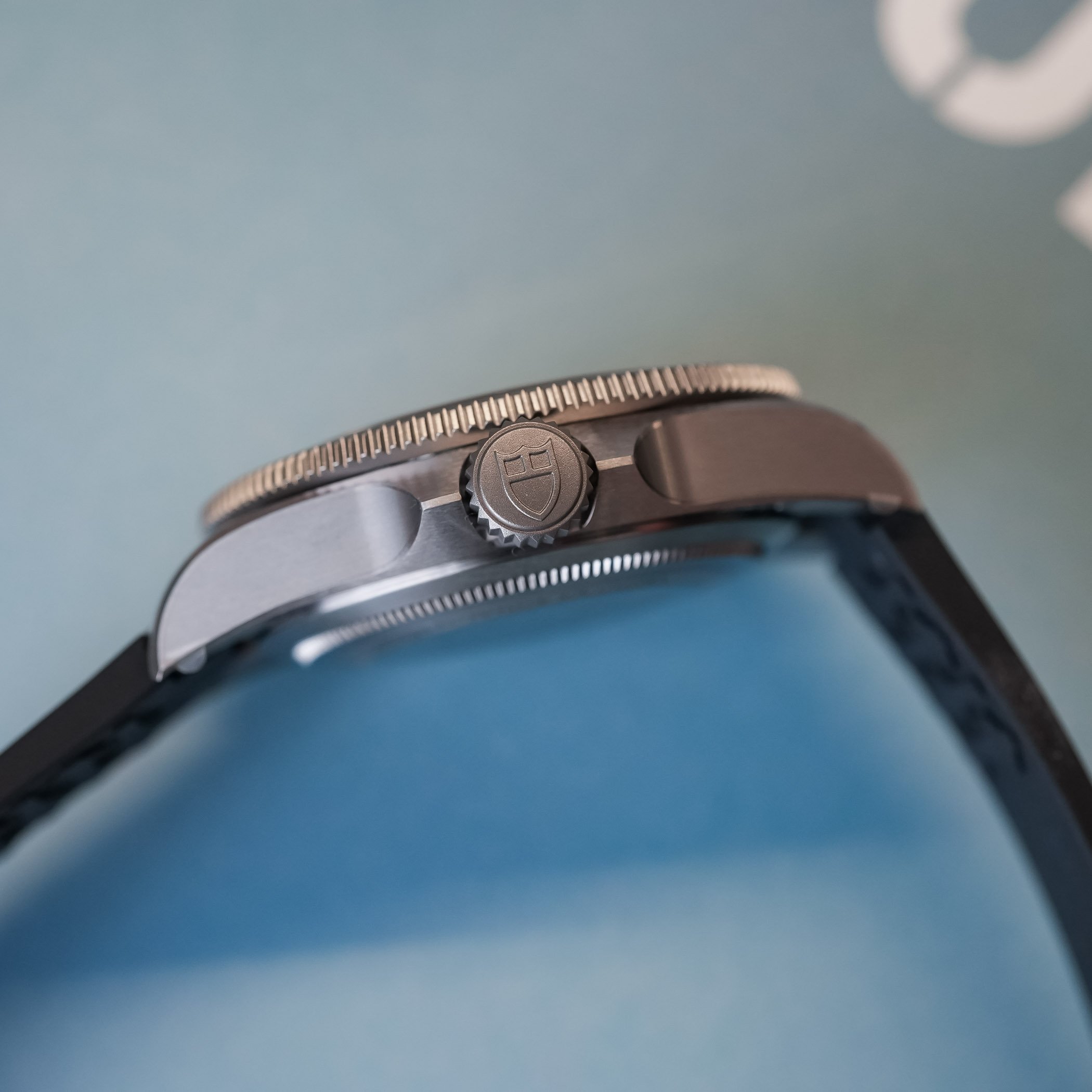
 A well-protected crown is a major plus when considering a summer watch
A well-protected crown is a major plus when considering a summer watch
For this reason, consider watches with solid cases, durable materials and shock-proof movements. A watch equipped with crown guards, which protect one of the most exposed parts of a watch, is advisable. A simple automatic movement (ETA, Sellita or even Omega, Tudor or Rolex, to name a few) can handle quite strong shocks without issue. However, I’d encourage you to avoid watches with complex movements – more complications equal more parts and more risks – or delicate mechanisms that are known to be quite sensitive to shocks, such as micro-rotors. Go simple, go reliable. Your delicate calendar watch? Let it also enjoy a vacation.
Materials… Should you go steel, titanium or exotic? And yes, potentially avoid gold
As the most common material for wristwatches, stainless steel is an obvious choice. But that’s not the only reason to consider it. Stainless steel is durable, quite resistant to shocks, fairly resistant to corrosion and not too heavy. It is also visually discreet, making it less tempting for people with bad intentions. At the other end of the spectrum, I would not recommend choosing gold for your summer watch. Gold is heavy, scratches easily, is less resistant to shocks and attracts thieves. And while there are sports and dive watches in gold, these are not proper instruments, but more statement pieces that you’ll wear at the poolside bar, not while surfing. As a general rule, better to stay away from precious metals and stones.

 As capable as it may be as a dive watch, the yellow gold Deepsea won’t be the most practical or appropriate summer watch. It’s not discreet, it’s heavy and considering its price, you might want to keep it safe from damage.
As capable as it may be as a dive watch, the yellow gold Deepsea won’t be the most practical or appropriate summer watch. It’s not discreet, it’s heavy and considering its price, you might want to keep it safe from damage.
Additionally, some summer activities can be harsh on your gear. Heat, sand, saltwater, and sweat can all take a toll. For these reasons, avoid plated metals or low-grade alloys, as they can wear down quickly in saltwater and sun.
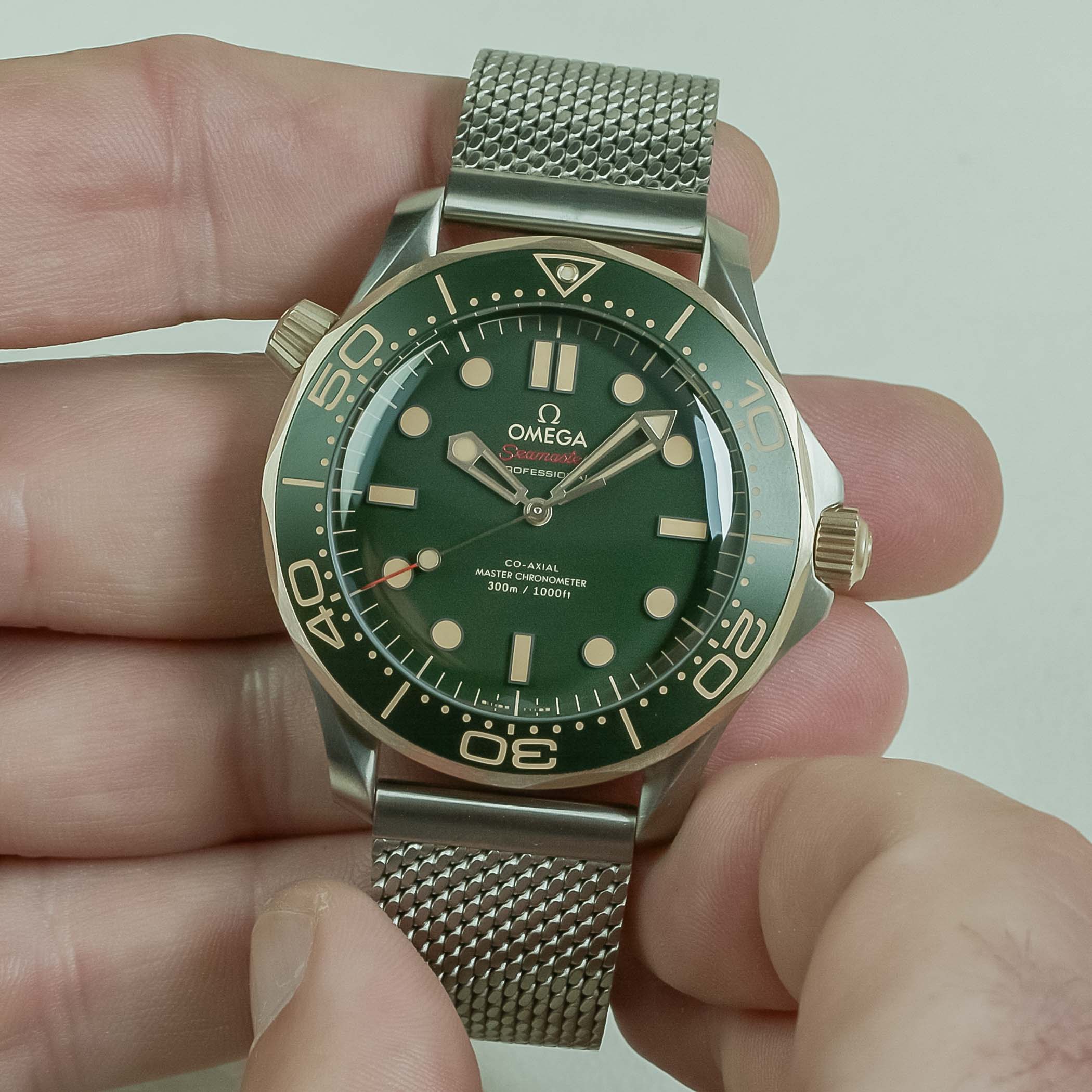
 The titanium edition of the Seamaster 300M, with its cool bronze accents and green bezel and dial, makes for a great companion during summer.
The titanium edition of the Seamaster 300M, with its cool bronze accents and green bezel and dial, makes for a great companion during summer.
While steel is an obvious choice, other materials can be considered. For instance, titanium is a great alternative. It is light (about 40% lighter than steel) and will enhance comfort on the wrist. It is highly resistant to corrosion (particularly grade 5 titanium), making it a great choice for a dive watch, and has excellent ductility and tensile strength. Finally, you can even opt for more exotic materials, such as ceramic (insensitive to corrosion, light, scratch-proof, but it can shatter under stress) or carbon fibre (very light, highly resistant, chemically stable, corrosion-resistant, but prone to structural delamination).
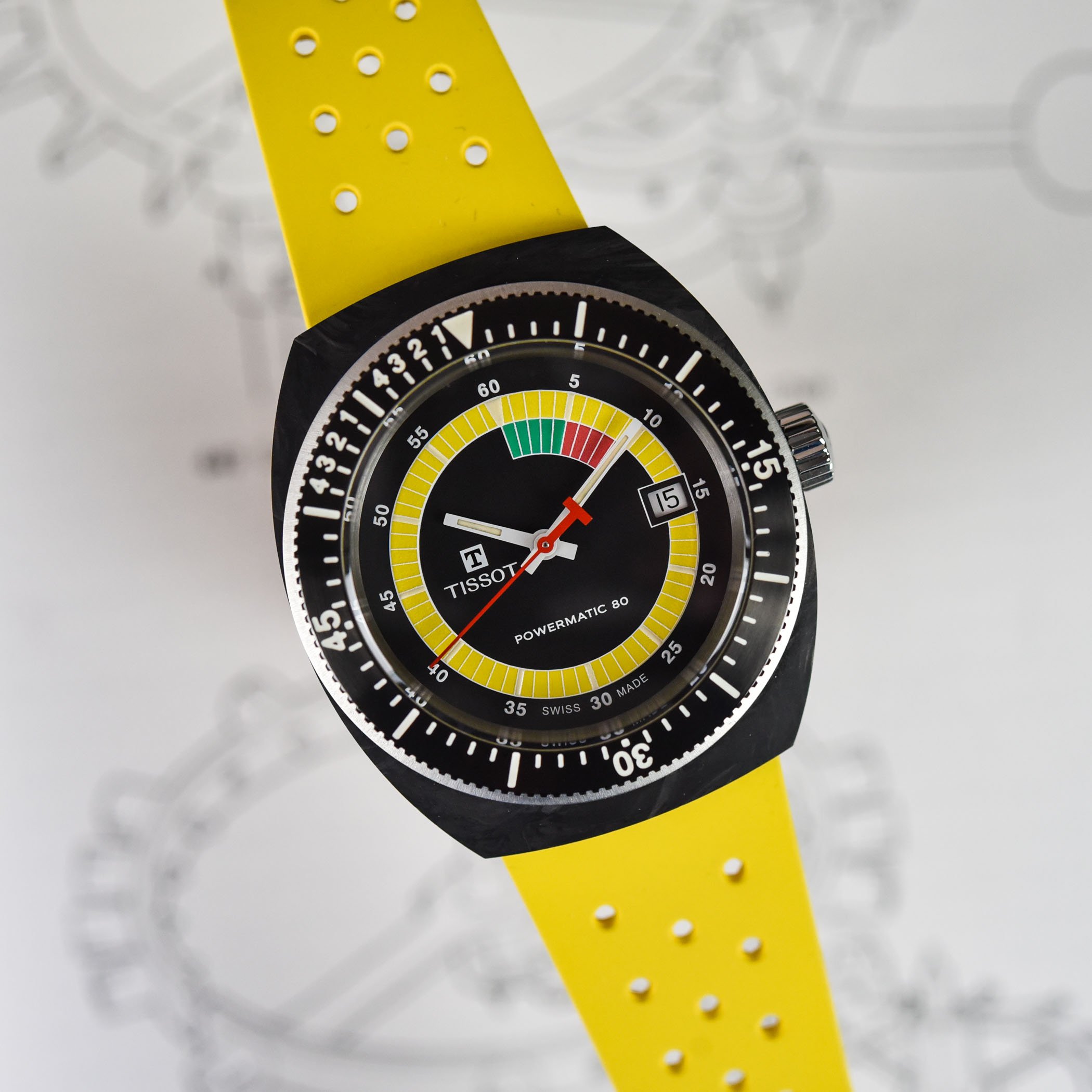

On the topic of materials, if your summer watch is equipped with a bezel, you can opt for a ceramic insert, which will be more resistant to scratches. Watches that come with an anodised aluminium insert, which might look great on land, are more sensitive to shocks and scratches. But some prefer these cuts and bruises as a reminder of a great adventure.
Comfort, comfort, comfort… And yes, also comfort
Just like water-resistance, comfort is not to be overlooked. There’s nothing more annoying than wearing a watch and for it to become more of a burden than a pleasure after a couple of hours. Avoid watches that are too large for your wrist, too heavy, too thick, or too sharp. Even if you’re spending your holidays city strolling, you’ll end up walking a lot, carrying your children and their bags, and at the end of the day, you’ll resent your watch if it isn’t a perfect fit.
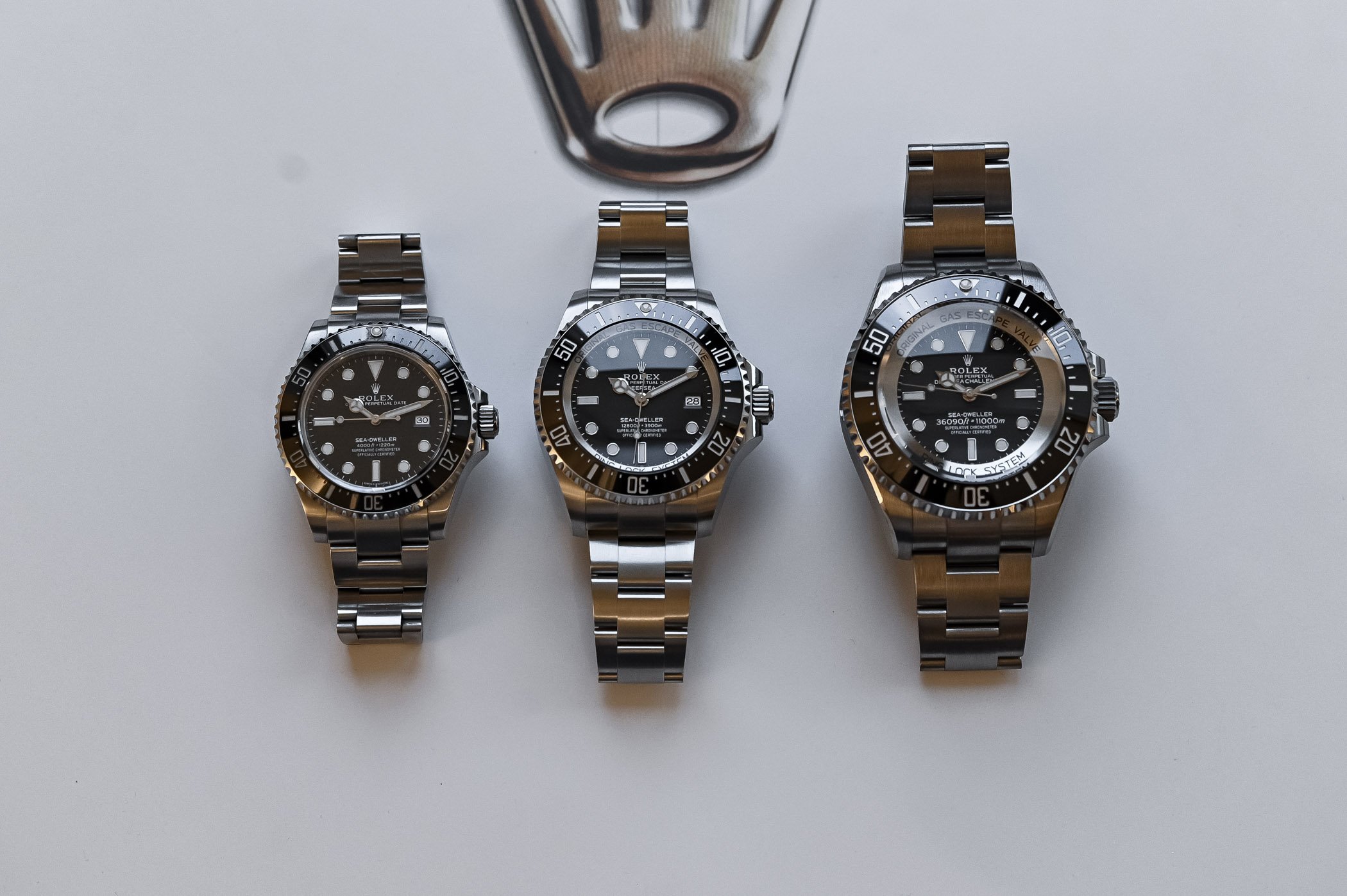
 You’d be better off considering size and comfort over style. Here are three capable to insanely capable dive watches from Rolex, but with massive differences in size (and thus comfort). Even the “least capable” Sea-Dweller 4000 is overengineered for most mere mortals
You’d be better off considering size and comfort over style. Here are three capable to insanely capable dive watches from Rolex, but with massive differences in size (and thus comfort). Even the “least capable” Sea-Dweller 4000 is overengineered for most mere mortals
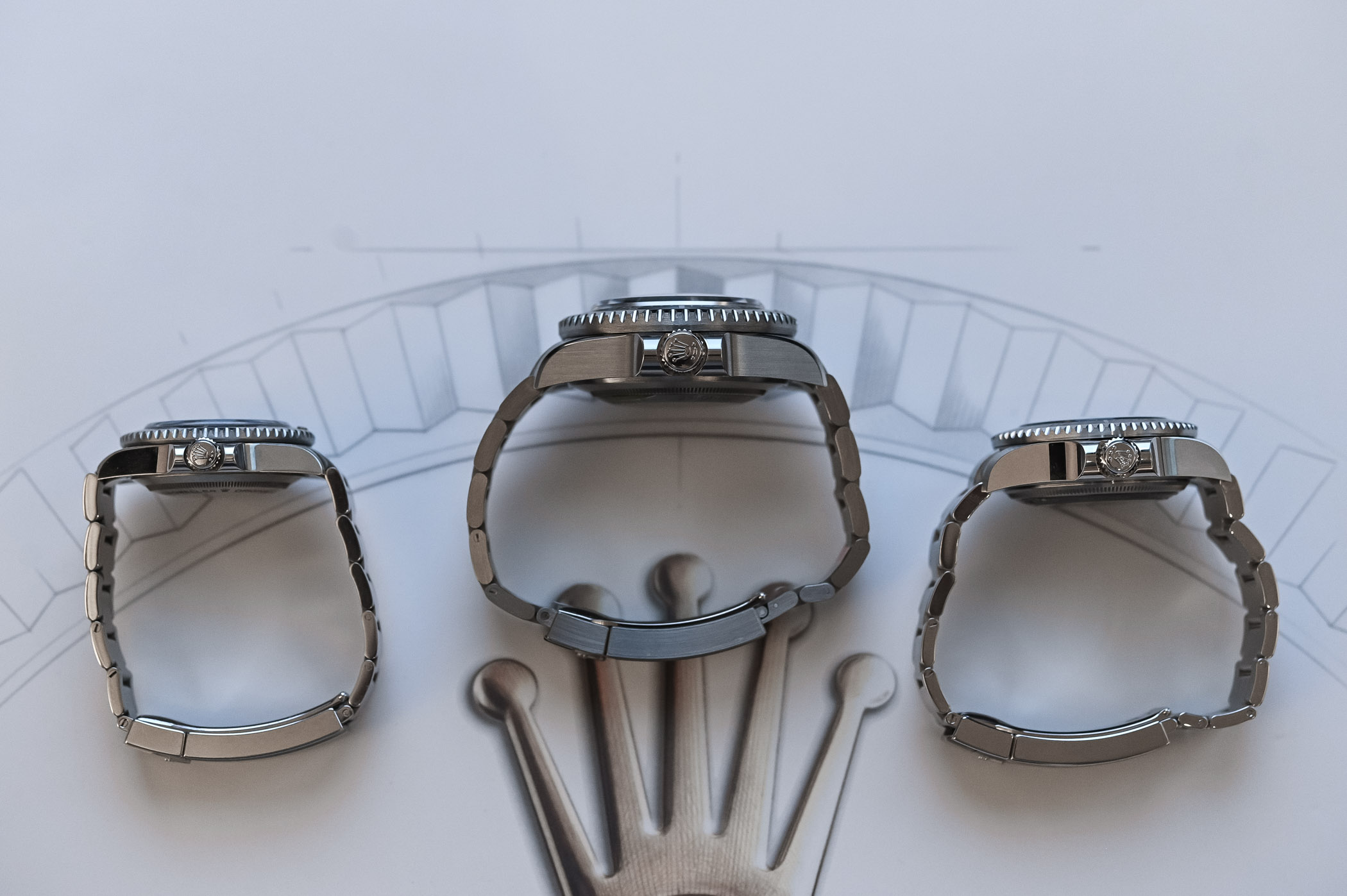

Style is too often favoured over comfort, but it shouldn’t be. I recently received a watch for review that initially felt great, but after wearing it for an entire day with temperatures over 30 degrees, I could only think of one thing: taking it off! The watch was heavy, the bracelet was too loose or too tight, some of the angles at the back of the case felt uncomfortable, and the crown was so sharp that it was hurting the back of my hand. So take a bit of time, wear some of your watches for a longer period and see if, after a full day under the sun and being active, it still feels comfortable. Then you’ll know if it’s the right watch for your 2-week summer trip.
Sapphire crystal is a no-brainer
This part is going to be short. Sapphire crystal is a must. Hesalite and plexiglass crystal look stunning on your Moonwatch and vintage chronographs, but they will be a real pain in summer, whether you’re on the beach, diving or hiking. They will end up getting scratched, sometimes to a point where they can’t be restored and need to be changed. Additionally, consider anti-reflective coating to reduce glare, which is inevitable during the summer, especially near the sea.
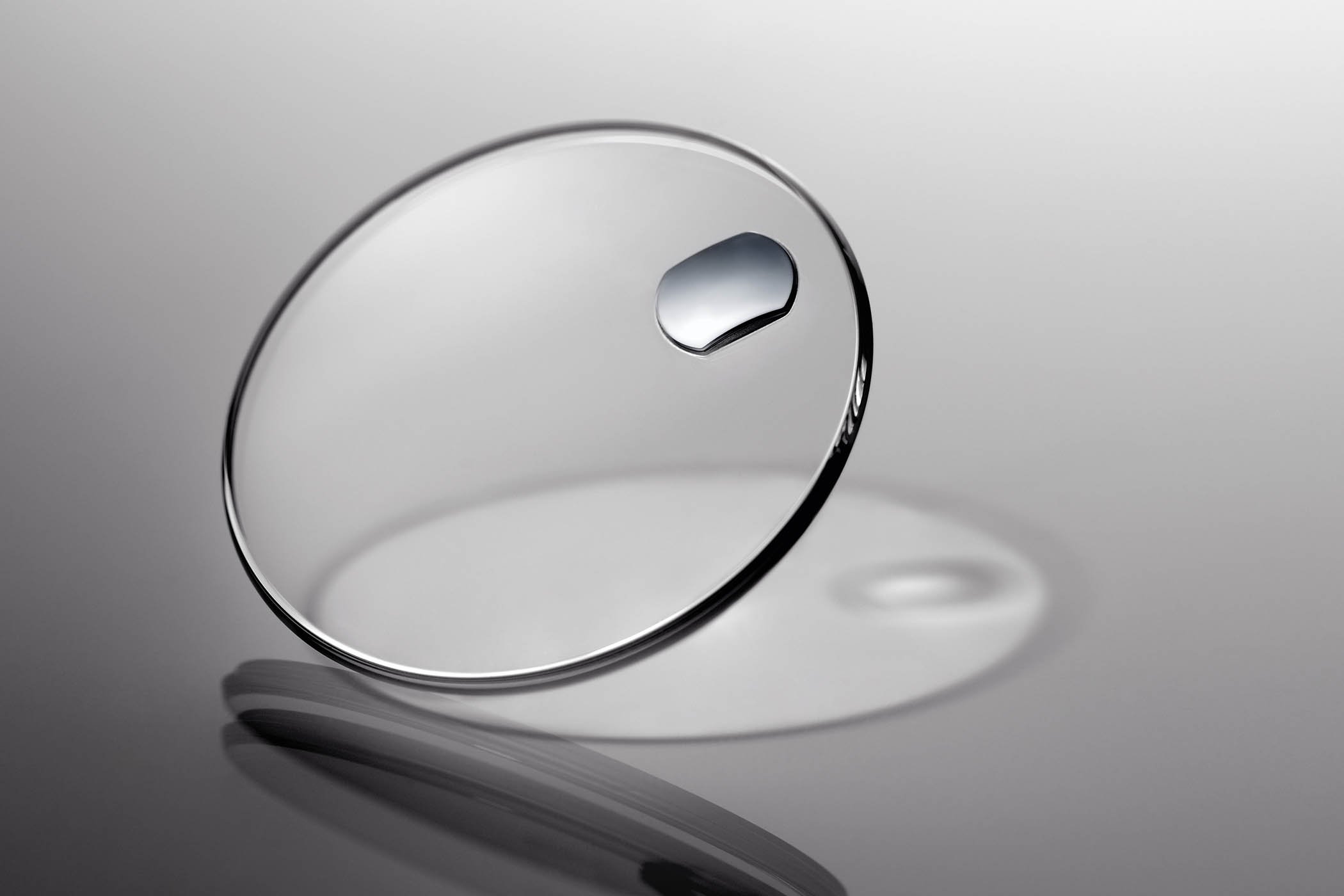

Strap or metal bracelet? But certainly not leather
Again, a very important question. What should you use to secure your watch on your wrist? Let me just start with what not to use: a leather strap. The wrong strap can ruin your summer experience, and leather is bound to let you down. Leather absorbs sweat and water and is damaged by the combination of humidity and heat. During hotter days, we’ve all experienced discomfort from a sticky leather strap. So, rule number one: leave your nice leather strap along with your gold dress watch and vintage chronograph in the safe. It will also benefit from a few days off. Waterproof leather straps exist, but they are not the norm.
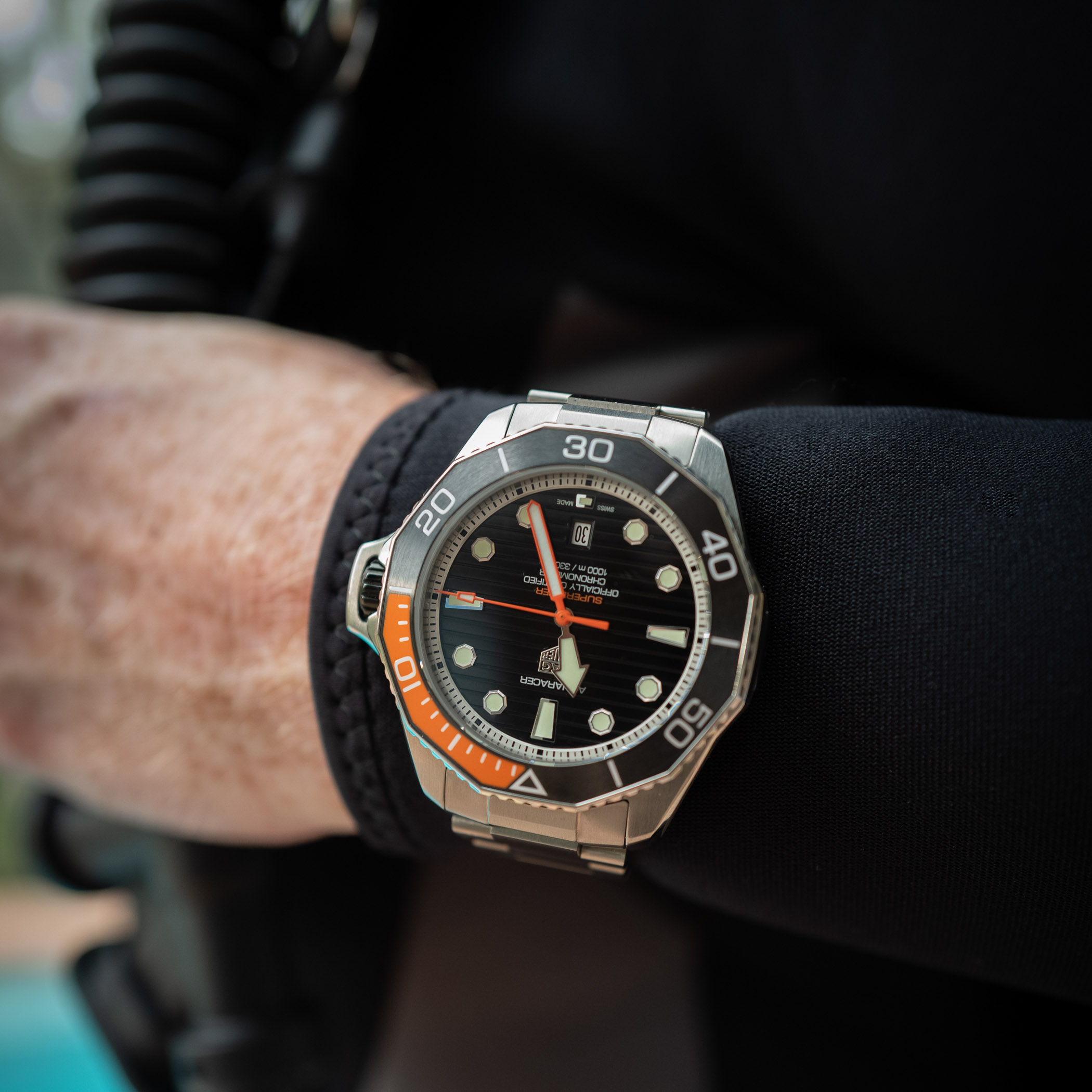

However, there are multiple great options to consider, including OEM straps and bracelets, as well as aftermarket alternatives if the original strap fitted to your watch isn’t suitable for sports and summer activities. First, metal bracelets. An obvious choice at first, but one that also comes with its weaknesses. Metal bracelets are generally solid and can resist everything you can do during summer. They are usually well-integrated into the watch design, making them quite flush with the case. It is, for most cases, a durable option and one that you’ll find on many sports, dive and adventure watches. They also dry fast, which is convenient when near or in water. However, they can be heavy and hot in direct sunlight. And then comes the issue of sizing them, but more on that in the next section.


Two great alternatives, either OEM or aftermarket, can be considered. First is a rubber strap, which is water-resistant, easy to clean, fast to dry and normally fairly durable. Most come with a pin or folding buckle, which can be adjusted during the day if your wrist swells with the heat. Some even offer the option of micro-adjustment clasps. An obvious choice for a dive watch, however, some are not particularly breathable and can become sticky at the end of the day.

 Two-piece textile straps are a great option, combining the practicality and durability of a classic NATO without the added thickness on the back of the watch.
Two-piece textile straps are a great option, combining the practicality and durability of a classic NATO without the added thickness on the back of the watch.
Another option that we often see on sports watches is a textile strap, such as a NATO or Perlon strap. These nylon-based options, which exist in one or two-piece versions, or even single-loop models to prevent increasing the watch’s thickness, are breathable, they dry fast, they don’t usually make you sweat and are easily interchangeable. Being made from textile, they tend to be less durable, but compensate with an accessible price.

 Marine Nationale Straps by ErikasOriginals… ultra-resilient, super comfortable.
Marine Nationale Straps by ErikasOriginals… ultra-resilient, super comfortable.
Lastly, an option that I recommend is single-piece elastic straps, such as those made by ErikasOriginals. Inspired by the straps used by the French Marine Nationale on their MN Tudor watches (these were made from elastic parachute braid and parachute hardware), these are durable, breathable, fast-drying and, last but not least, extensible. They are also adjusted without increments, meaning that you can fit them perfectly or enlarge them slightly during the day. As far as it goes, it is my preferred choice for a summer watch.
A micro-adjustment clasp will save you from the heat
If you still want to wear your summer watch on a metal bracelet, whether it be steel or titanium, I strongly encourage you to opt for a watch with a micro-adjustment system on the clasp. Something personal, but I know I’m not the only one, I suffer from swollen ankles, legs, wrists and hands during summer. Sometimes, to such a pretty serious degree that I have considered not wearing a watch at all during the hottest days of the year. I love watches, but at a certain point, they become more of a discomfort than a pleasure.

 The clasp of the Tudor Pelagos Ultra is probably one of the most advanced now available on the market
The clasp of the Tudor Pelagos Ultra is probably one of the most advanced now available on the market
One of the most recent inventions is the micro-adjustment mechanism, which is directly integrated into the clasp. Adjustable on-the-fly, these mechanisms let you make small, precise changes to the length of the bracelet, without having to add or remove links, by simply pressing a button or sliding the clasp position back and forth using a slider. Adjustments are usually in small increments, such as 1 to 5mm, making sure you’ll find the right length as your wrist size changes throughout the day due to heat, activity, or swelling.
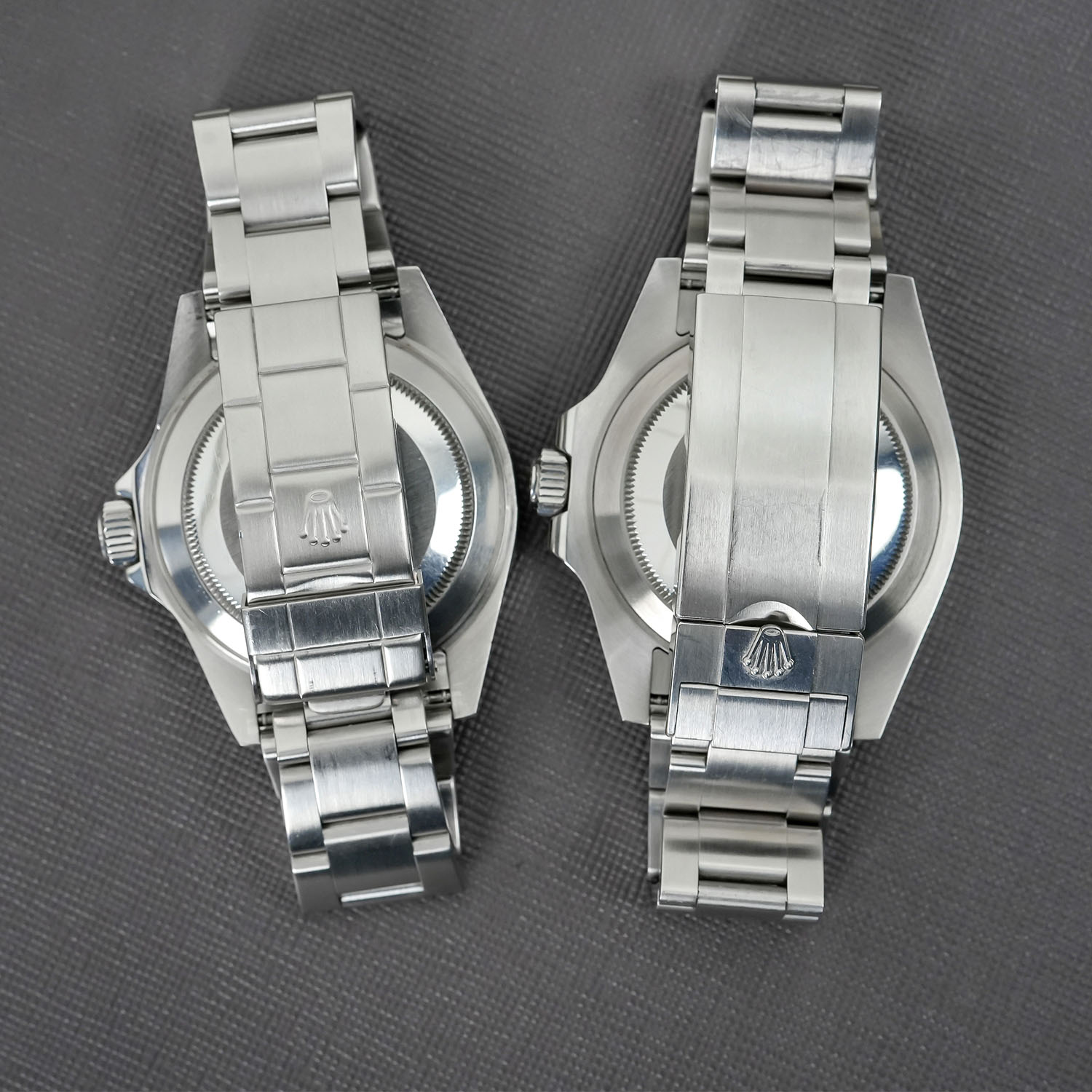
 While a bit bulkier, the clasp of a modern Rolex Submariner is miles better than the old ones, both in quality and functionality. The old one has a built-in diving extension, but it doesn’t allow for quick micro-adjustments like the new one. Daily comfort will be drastically improved
While a bit bulkier, the clasp of a modern Rolex Submariner is miles better than the old ones, both in quality and functionality. The old one has a built-in diving extension, but it doesn’t allow for quick micro-adjustments like the new one. Daily comfort will be drastically improved
Another, more niche device to consider if you’re an avid diver is a built-in diving extension that lets you use your watch over the sleeve of a neoprene dive suit, without preventing you from using it back on dry land.
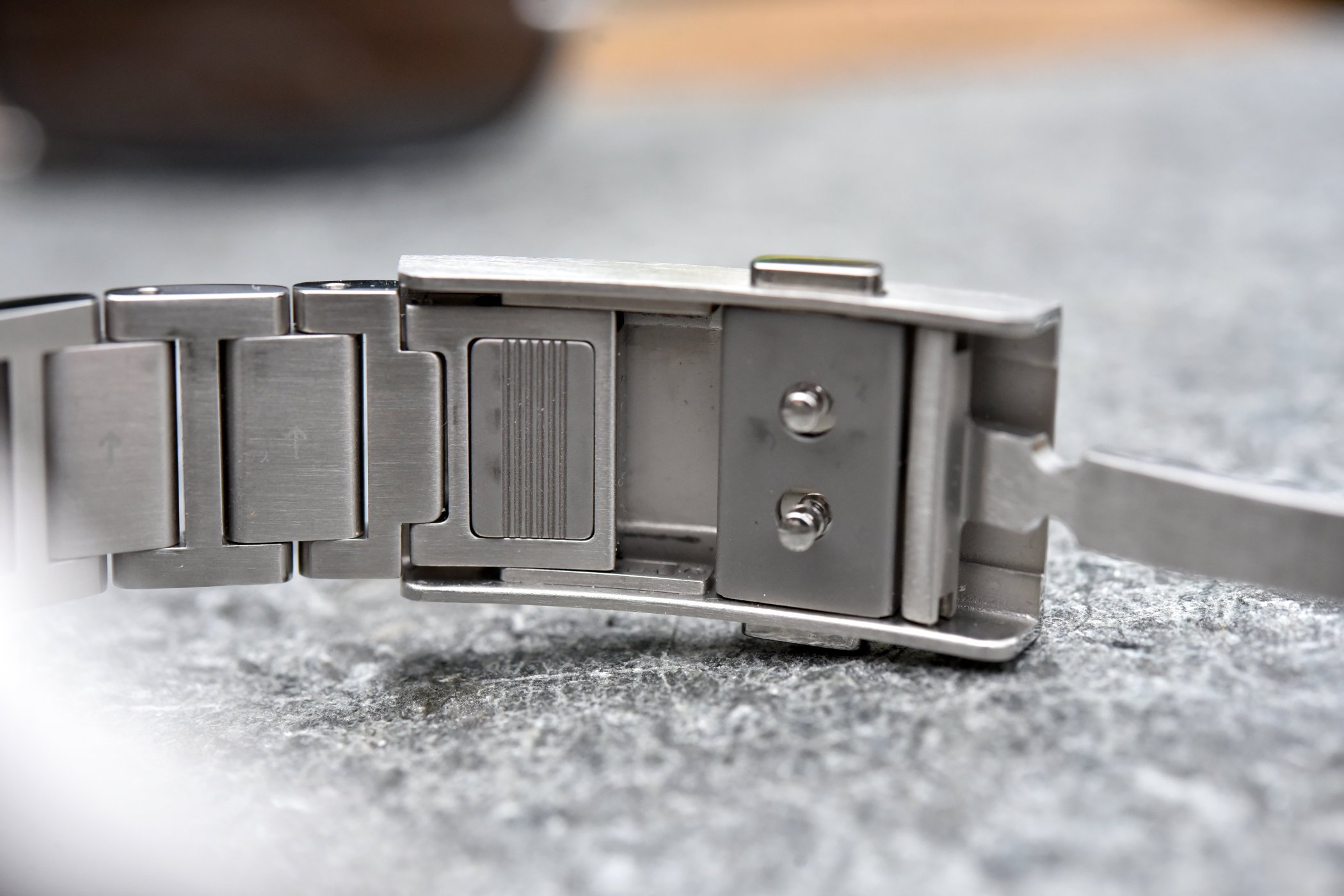

Are there other watches to consider besides a dive watch?
Keeping in mind the need for sufficient water-resistance (100m as a minimum), there are, of course, multiple other watches to consider for summer besides the obvious dive watch category. A solid adventure-themed watch, anything in the field or military watch categories, as long as it has a robust case, 100-metre water-resistance, a sapphire crystal and a screw-down crown, can be perfectly adequate.

 Both the Longines and Mido here combine the benefit of a dive watch with a true GMT function, while retaining a 60-minute bezel
Both the Longines and Mido here combine the benefit of a dive watch with a true GMT function, while retaining a 60-minute bezel
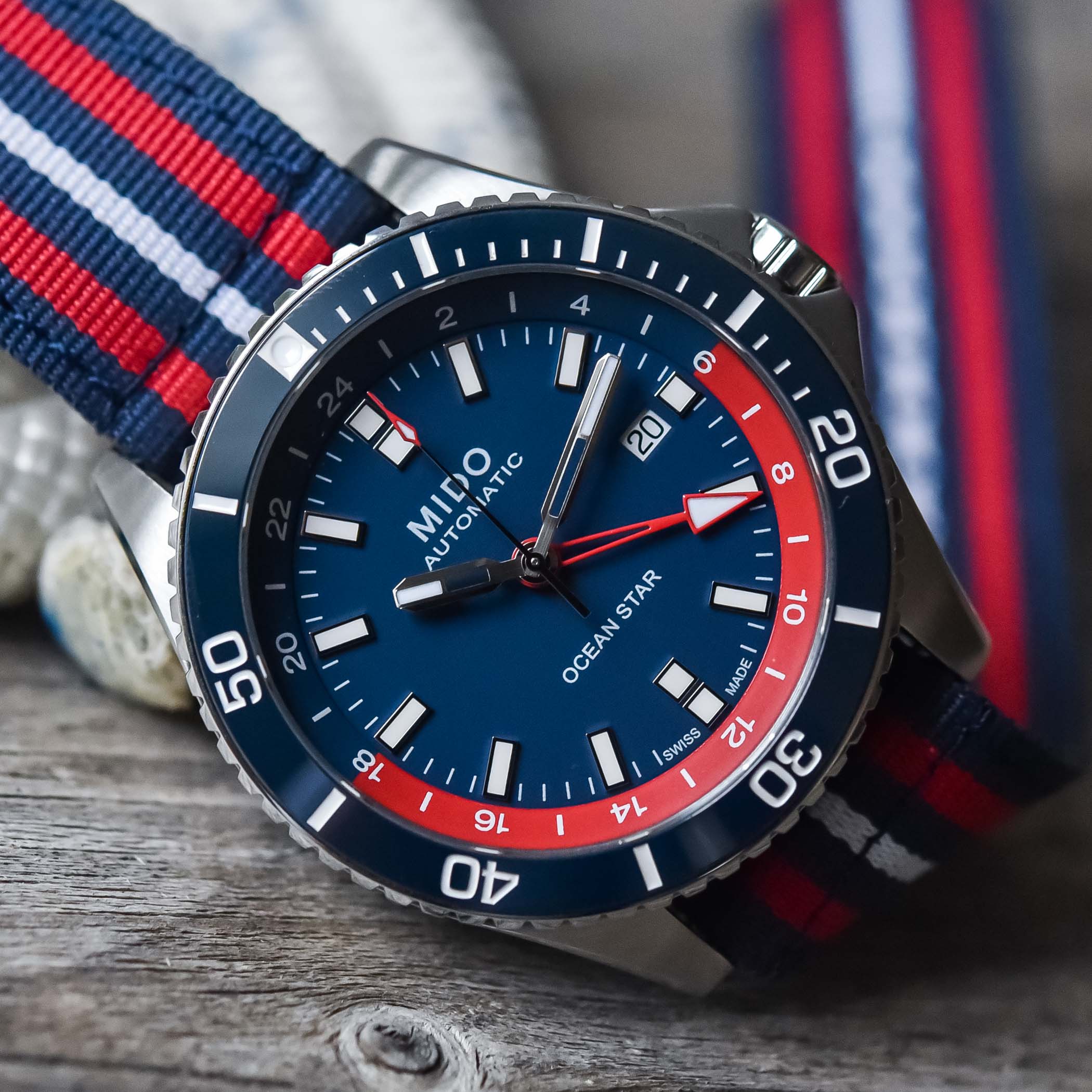

Then, depending on the specifics of your holidays or weekend hobbies, several complications can be considered. First, if you’re travelling abroad, a sporty GMT watch will be a highly practical companion. Although not common in the accessible price range, you should favour a so-called flyer or true GMT watch over an office-style GMT watch. As explained in this in-depth article, a true GMT watch allows you to independently set the local hour hand in one-hour increments, on the fly, without disturbing the rest of the display, which is far more practical when crossing borders and changing time zones. An office or caller GMT watch works differently since it’s the 24-hour hand that can be set independently. Since the latter is used as the home time hour indication when travelling, setting such a watch requires more steps.
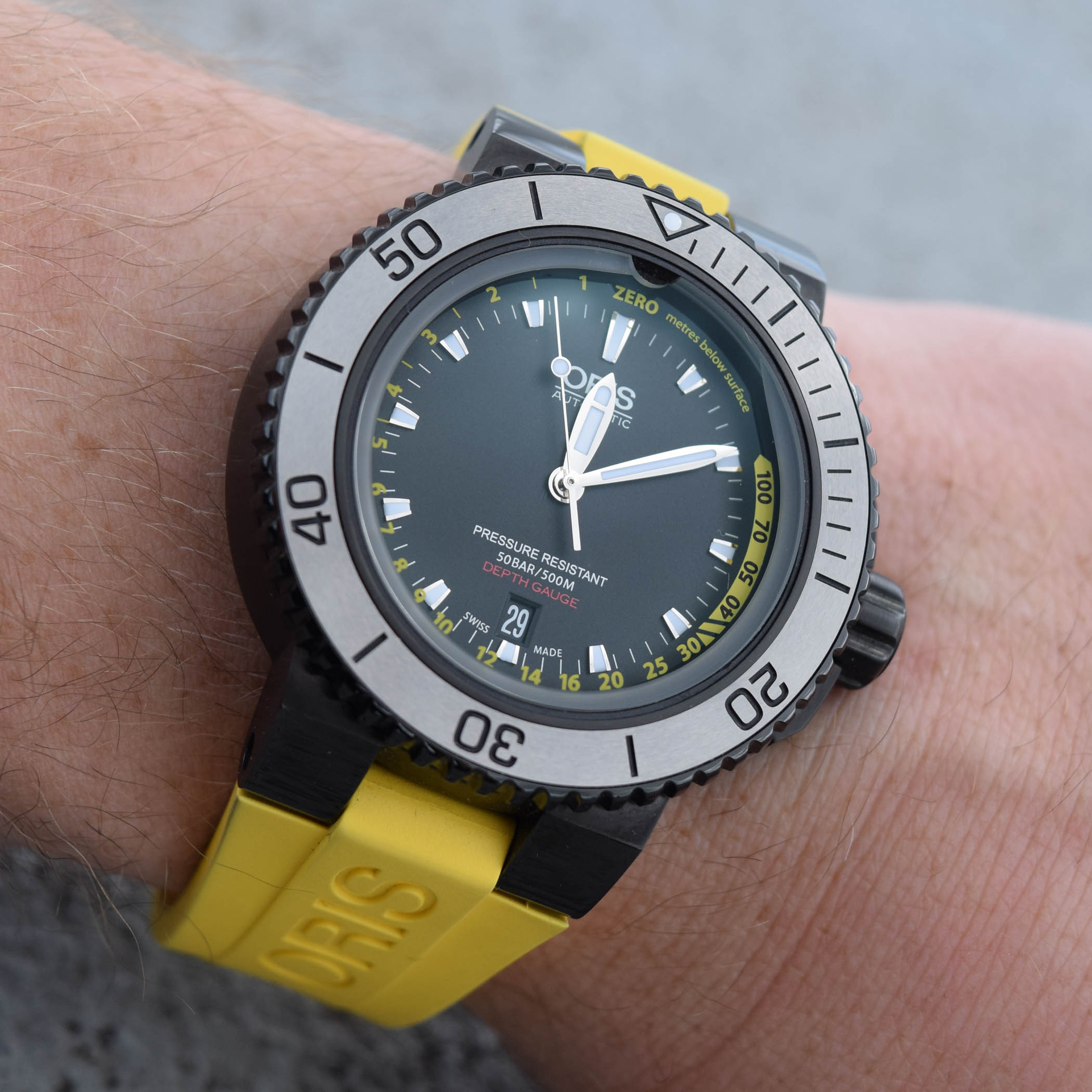
 The Oris Aquis Depth Gauge is one of the rare watches to be equipped with such a feature
The Oris Aquis Depth Gauge is one of the rare watches to be equipped with such a feature
Then, some features and complications can be useful in certain fields. If you’re an avid diver, a depth gauge (a niche but very cool feature) can be useful. In the same vein, an altimeter can be practical if you’re hiking in the mountains. Finally, a watch with a compass bezel can be a vital aid during orientation trips.
As for the chronograph function, except in certain specific fields of action, it isn’t a complication that we particularly recommend. The main reason is that a chronograph, excluding certain specialised models, is not as protected against shocks and water as a simple time-only watch. Except for diving chronographs or watches with screwed pushers, water ingress is more likely to happen on a chronograph than a traditional watch.
Colours and style – now is your time to go bold (or not)
Summer means lighter fabrics and brighter colours. So why not do the same with your summer watch? If you’re feeling confident with it, of course. Nothing forces you to go bright and bold, but it certainly is easier to wear a light blue, yellow, orange, or even pink (a trendy choice these days) watch. Some brands even create specific summer collections with colourful dials and straps. If you prefer a more conservative look, consider white or blue dials as a summer-ready option that can also be worn throughout the rest of the year.


However, always keep in mind that your summer watch of choice is an investment that you might want to wear at different times of the year, and you have to consider something you’re comfortable wearing during more than one season.
Price – why shouldn’t a summer watch be too expensive?
With everything we’ve explained above, you have probably understood by now that the watch you’ll be wearing over summer and weekends will likely see some action. For this reason, we suggest remaining within a price range that you consider accessible. This, of course, is a matter of perspective and financial considerations, but always consider that your summer watch can be damaged (water ingress, scratches, shocks) or lost during travel.
Finally, expensive watches are known to attract people with bad intentions, at least in certain regions. Besides having your watch stolen, it can put yourself, your family or your friends in a dangerous situation. No watch is worth the risk. Keep a low profile. There are dozens of cool, fairly accessible watches that will fly under the radar and yet deliver enough horological pleasure.
The summer watches of the MONOCHROME team
While the final decision will be yours and we’re not here to tell you what you should wear, here are some examples of what we will be wearing this summer. As you’ll see, it will definitely depend on where we’re travelling and what we’re doing during our holidays. Maybe this will give you an idea, but keep in mind that the perfect summer watch is the one that fits you, that answers your needs, and that, in the end, makes you a happier watch enthusiast.
- Frank Geelen: “The perfect summer watch… It’s actually a very good question, and I must admit having a hard time finding the right watch. This year, I’ll be travelling across multiple time zones to end up close to the sea. What I would need is a watch with enough waterproofness, but also one with a proper GMT function. By that, I mean a flyer GMT watch. Of course, comfort is non-negotiable. An easy answer would be a Rolex GMT-Master II, but I don’t own one, and it’s not the easiest to acquire. A Seamaster Planet Ocean GMT could have been an option, but it’s too thick and too large for my taste. The same goes for the Tudor Black Bay Pro, which didn’t feel very comfortable on my wrist during warmer days, being quite thick and heavy. Maybe I should consider a 5-digit Explorer II… Thin, robust, compact and equipped with a flyer GMT.”


- Robin Nooij: “For me, it will be a Doxa Army. It’s a robust dive watch that can handle water and shocks, it has a bronze bezel that will age nicely under summer sun, and even though I’m travelling to the Alps, I’ll need solid water-resistance for swimming in the lakes. Also, the FKM rubber strap makes it comfortable and heat-resistant. Finally, it looks cool and has an adventure style.”
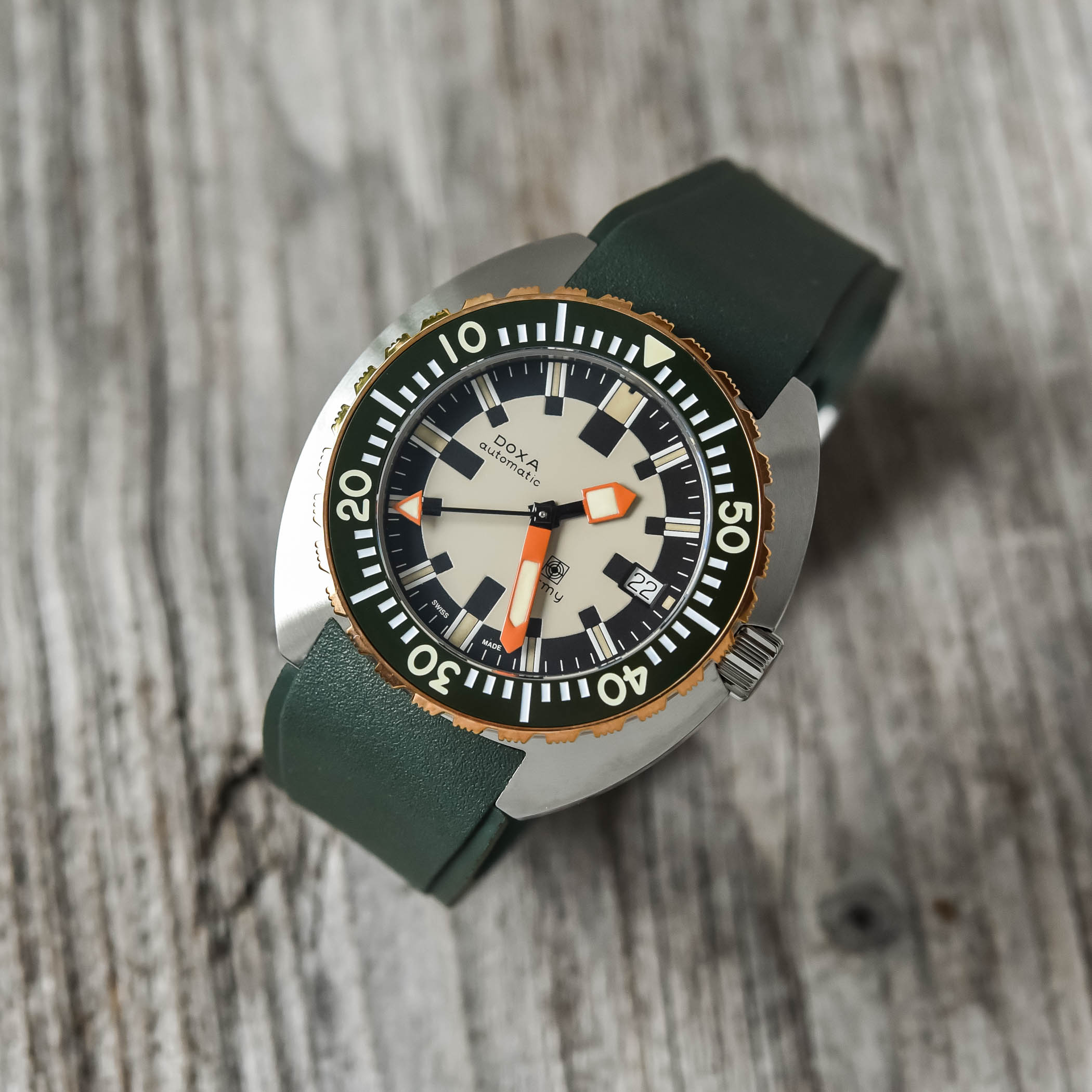

- Xavier Markl: “Well, it’s not a watch I own, but I recently got to try the new Certina DS Action Diver 40.5mm in titanium and immediately thought it would make a great summer watch. It’s a proper diver, it has multiple shock protection systems, it’s made of lightweight titanium, the size is just perfect for me, and then it comes fully equipped with a ceramic bezel, 300m water-resistance, a reliable movement with a long power reserve, and it even has a micro-adjustment system on the clasp. The best of all? It is priced at around EUR 1,000, which is impressive considering the whole package. And since I’ll have some rather eclectic holidays (travelling to Asia briefly, then seeing some family in the south of France, but also backpacking and doing sports), it’s an all-rounder watch that flies under the radar, looks somewhat elegant-ish when needed, and yet is robust enough.”


- Brice Goulard: “I’m lucky enough to have found the answer for the perfect summer watch years ago… It’s always been my Tudor Black Bay Blue, the first-generation model with an ETA movement. I’m wearing it on an elastic Marine Nationale strap by Erika’s Originals, not only because I’m French and it reminds me of the old MN watches, but because it’s a pure joy for summer days. It’s resistant (I’ve had mine for over 10 years), breathable, extensible, and dries quickly. And the watch is equally solid, with its ETA movement inside and 200m water-resistance. Plus, it looks good, without screaming luxury, and since I’m travelling mainly to Southern Europe, I don’t need a GMT, but I prefer something that flies under the radar. It’s also versatile enough, so I can wear it for the rest of the year. Another watch I could have considered is my green Seiko Captain Willard on a two-piece textile strap. Maybe I’ll bring both.”
I hope this guide to finding the right summer watch was helpful. Let us know in the comments what you think is the best summer watch, what you personally consider important before choosing and what you will be wearing this summer.
https://monochrome-watches.com/buyers-guide-what-makes-a-great-summer-watch-what-to-consider-and-what-to-avoid/